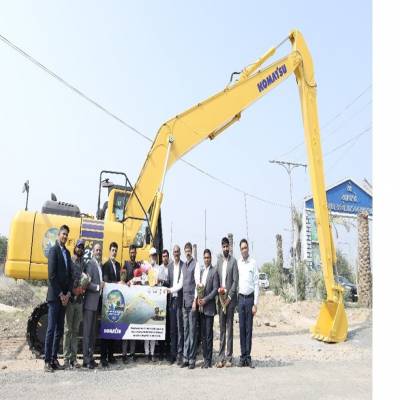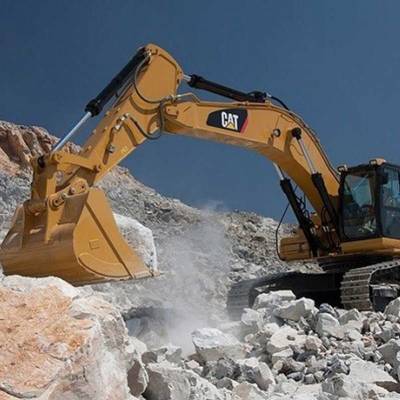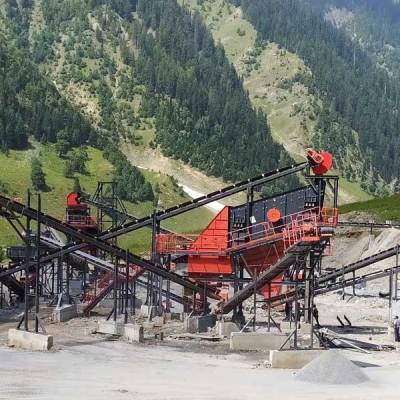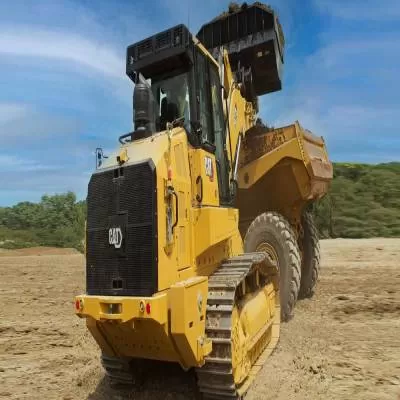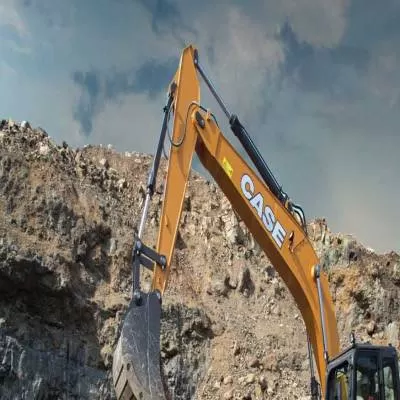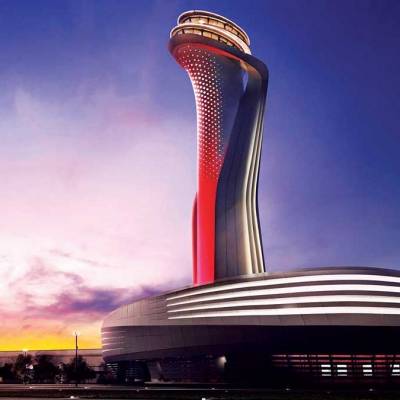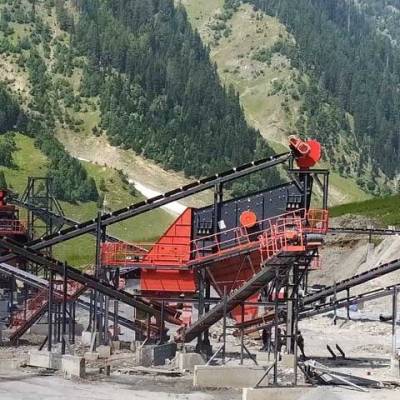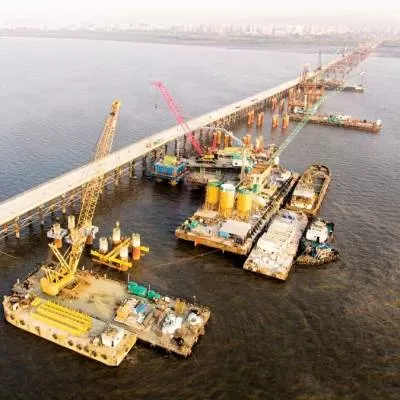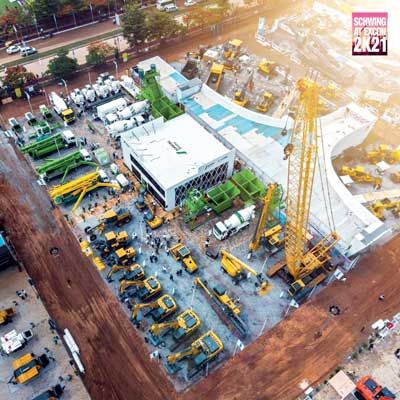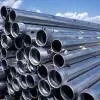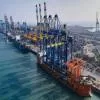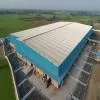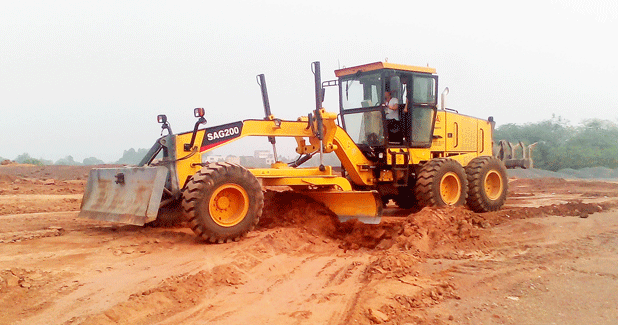
Ground Realities
Notwithstanding the change in government at the Centre, demand for earthmoving equipment appears to be stuck in a rut.
¨Demand for earthmoving equipment declined by 16 per cent in 2014,¨ opines Abhijit Gupta, Managing Director, Case India. The only silver lining he sees is that demand seems to have stopped falling in the past few months. So he is positive about the prospects in certain quarters of the economy. ¨Some green shoots representing demand are emerging in the roads sector and may grow fast given the recent Union Budget announcement to increase the outlay in the sector by Rs 14,000 crore to reach perhaps an all-time high of Rs 42,000 crore in a year,¨ he adds. ¨Rural road flagship schemes are posting better growth than urban schemes and promise to continue to do well with 158,000 km of new roads planned in rural areas in the ongoing five-year plan.¨
¨We are starting to see more enquiries for excavators and compactors, good enquiries from the road construction and coal mining sector,¨ says Dimitrov Krishnan, Vice President, Volvo Construction Equipment India. ¨But the change is still nothing to write home about from a total market growth perspective. Backhoe loaders account for the biggest chunk of the total market and continue to be sluggish.¨
Still, long-term business sentiment is positive. ¨Coal mining and road construction will fuel demand for earthmoving equipment in India,¨ says Deepak Garg, Director & CEO, Sany Heavy Industry India Pvt Ltd. ¨Demand for large (35-65 tonne) hydraulic excavators and haulage equipment (22-40 tonne payload capacity) will come from the coal sector.¨
No race within the segment
Backhoe loaders have held on to their top seller position in the earthmoving equipment segment and are driving sales for many players.
¨Backhoe loaders are our highest sellers, on the back of which Terex recorded 11 per cent growth in 2014 when overall industry volumes declined by over 20 per cent,¨ says Rajesh Shrivastava, General Manager-Marketing, Terex India.
¨Our flagship product, the versatile backhoe loader is our best selling product,¨ shares Amit Gossain, Executive Vice President-Sales, Marketing and Business Development, JCB India Ltd. ¨JCB also continues to focus on specialised machinery like tracked excavators, wheel loaders and compactors with the knowledge that as projects become more complex and time-bound, demand for these products will also grow.¨
Some vendors are focusing on expanding and strengthening their presence in the earthmoving segment. ¨Case is the market leader in the Indian compactor segment,¨ shares Gupta. ¨We have consolidated our dominant position in the backhoe loader segment. Our new skid steer loaders capable of working in confined areas are becoming popular.¨
In the earthmoving segment, Sany offers hydraulic excavators and motor graders in India. ¨Our excavators are popular across all infrastructure industries and our excavator range varies from 8 tonne to 48 tonne,¨ says Garg.
Cut operational costs
Across the market, users are demanding high performance at the lowest possible operational cost even if this means spending more at the outset.
¨Mining contractors look out for the cost per tonne of mined material, not only the capital cost of equipment,¨ says Krishnan. ¨They are willing to invest higher upfront in equipment if the operations are guaranteed to be more fuel-efficient and deliver lower total cost of ownership.¨ According to him, capital cost accounts for less than a fifth of total mining cost while about 50-60 per cent of operating cost is attributed to fuel. Volvo excavators are rated at the top in terms of fuel efficiency.
¨Our machines deliver excellent value for their price,¨ adds Shrivastava. ¨They are fuel savers and have the lowest servicing costs - every user is looking for operational economy.¨
¨Customers are increasingly demanding high and reliable performance at the lowest possible operating cost, which our machines can deliver thanks to being fitted with the fuel-efficient ecoMAX engine offering high torque at low rpm,¨ says Gossain. He explains that JCB´s backhoe loader can potentially save Rs 2.6 lakh per year over its competitors. Its tracked excavator JS 205LC can save Rs 1.3 lakh per year on fuel costs alone and the 430ZX Plus wheel loader can save Rs 2 lakh over three years. To help users remotely monitor the performance of machines, JCB recently introduced LiveLink, an innovative technology operating on the SOS principle: Service, Operation and Security.
¨Our machines feature the dynamic optimisation intelligent matching control system and multifunction mode selection, each of which helps cut fuel consumption by 5-10 per cent and boost productivity by that much too,¨ says Garg. Increasing operational cost consciousness is compelling brands to come out with more efficient machines and models tailored for certain sectors.
¨Our recently launched EX series of backhoe loaders powered by 76, 86 and 96 HP FIAT engines (FPT Industrial) features an air after-cooler system that increases the density of intake air, improving productivity by 5 per cent and cutting fuel consumption by up to 13 per cent, or 3.97 l/h in excavation work, which translates into average savings of Rs 50,000 per year vis-a-vis competing products,¨ says Gupta. And, according to Garg, Sany has recently launched hydraulic excavators especially for the mining sector, models SY380LC-9H and SY480LC-9H featuring large bucket sizes - 1.44-2.1 cu m bucket and 2.5-2.9 cu m bucket, respectively.
From vanilla to feature-laden models What do buyers look for?
¨We decide on the size of the equipment depending on project requirements and availability of associated equipment,¨ says G Boopathi, Manager-Civil, Technology Competency Centre, Heavy Civil Infrastructure IC, Larsen & Toubro Ltd. ¨Larger excavators necessitate larger trailers and trucks for transportation. If these aren´t available, a larger excavator would lie idle for long, which would reduce the return on investment. On the other hand, too small an excavator could limit potential applications like dig depth and digging power.¨
¨Also, the equipment´s depth of cut, height of dump and versatility to work in various types of soils must match associated equipment. Its weight, engine make and capacity, past performance and previous maintenance history indicate its durability and cost-efficiency. Good service, readily available spares and easy troubleshooting are other essentials,¨ according to Boopathi.
¨We chose an imported 48-tonne excavator for our mining project because it is one of the few that supports a 3 cu m bucket size, which was a mandated technical specification of the mining project the machine was purchased for,¨ says Ravi Varma, Director, Dott Engineering Services. ¨We have opted for Sany excavators and other earthmoving projects from Caterpillar as our company´s overseas units are familiar with the maintenance and running of these machines and we know them to be durable. Sany provides good technical support.¨
What range of attachments is the equipment compatible with, and is its hydraulic system capable of supporting these attachments?
¨This is another big question to ask,¨ says Boopathi, ¨because attachments may be needed for placing material overhead, backfilling trenches or breaking up concrete, and so on.¨
The continuous evolution of equipment has resulted in feature-laden and customised models that are capable of doing more than their plain vanilla counterparts. Higher-end models come at a price, which can be slightly or significantly more than the base cost depending on the extent of difference in functionality.
¨Feature differences in the same class of hydraulic excavator include the availability of air-conditioning and engine option,¨ says Garg. ¨If you consider a non air-conditioned model with a Cummins engine as a vanilla model, it would be cheaper than the most feature-loaded model by 3-5 per cent.¨
¨Case products command a premium in the market but still deliver high value for money because of their operational efficiencies,¨ explains Gupta. ¨Our feature-laden models cost significantly more than our vanilla models because of the material differences between the two - driveline options between the two-wheel and four-wheel drive and other attachments with associated hydraulic circuit adaptation.¨
¨Cost-wise, our backhoe loader variants in the 76 and 90-96 HP categories can vary by 8-12 per cent depending on the features customers add or customisation they order,¨ says Shrivastava.
´Make in India´, or not?
The new Central Government is pushing for more investments in manufacturing. Some players in the earthmoving segment have already set up manufacturing bases in India to serve customers here more efficiently.
¨Our entire range is localised and manufactured in India to keep product costs low and deliver cost-effective solutions,¨ says Shrivastava.
Brands are manufacturing their most popular local models in India. ¨About 50-60 per cent of our sales in India are fulfilled by our Bengaluru manufacturing plant,¨ says Krishnan. ¨We manufacture our 20-30 tonne excavator models, soil compactors, double-drum compactors and 5.5-m pavers in this plant owing to higher market volume.¨
Some vendors are even using India as a manufacturing base for the world. ¨JCB has been making in India for many years now,¨ says Gossain. ¨Even during the global recession of 2008-09, we expanded our Ballabgarh facility into the world´s largest backhoe manufacturing plant.¨ JCB´s manufacturing mantra is zero defect (one global quality), zero effect (green plants) and sell everywhere (it exports to Africa, Middle East, Southeast Asia and the Indian subcontinent, and to the parent and sister companies). It inaugurated its newest and largest manufacturing facility in Jaipur in November 2014.
So, is the call to ´Make in India´ likely to spur further investment in construction equipment manufacturing? Views differ.
¨We see in the Government´s Make in India initiative a greater opportunity to use India as a manufacturing base for the world,¨ says Gupta. ¨CASE has introduced world-class manufacturing processes at its plant in Pithampur, Madhya Pradesh, at a cost of over $50 million over the past three years, and started exporting from it to both developed and developing countries. Stepping up quality at Pithampur has also benefited Indian customers.¨
¨Having invested Rs 600 crore in our hydraulic excavator factory in Chakan, Pune, we are now investing in the localisation of components for hydraulic excavators and in an operator training school for the certification of operators of equipment owned by our customers,¨ says Garg. ¨We propose to make Sany India a manufacturing hub for the African, Middle Eastern and Asia-Pacific markets.¨
¨Investment decisions are based on micro and macro-economic assessment and not calls by political establishments,¨ says Shrivastava. ¨Timing is everything. Opportunities must visibly translate into viable business. We must see the ability to scale up and tap a growing market. Both these aspects are largely related to ease of doing business and the commerce ecosystem in the country. Any positive ground-level movement on these issues would push ahead our investment plans.¨
Niche market
Notwithstanding JCB´s huge manufacturing base in India encompassing its entire range, it imports mini excavators, a very small niche market, and larger (14 m and 17 m) telehandlers than what is manufactured (7 m and 11 m range) in the country. Volvo imports equipment from Korea and Sweden to cater to demand from the coal mining sector for larger capacity models of earthmoving equipment, 38-tonne, 48-tonne and 70-tonne excavators, and large wheel loaders with greater than 5-tonne payload.
Sany imports low-volume earthmoving equipment such as large-capacity excavators, especially for the mining industry. For instance, Sany has sold over 30 units of the newly launched imported SY480 - 48 tonne excavator for coal mining in India. The Sany SY480 is capable of production rates in excess of 300 bank cu m per hour with an average fuel consumption of 32-38 litre per hour depending on the condition of the strata and extent of blasting.
¨Case imports skid steers from USA for utility jobs in real estate and industry, motor graders from Brazil for road projects and wheel loaders from Italy for the mining sector,¨ says Gupta. ¨All this equipment has undergone suitable homologation to match Indian requirements.¨
Why would a buyer opt for overseas equipment if an indigenous model is available? ¨Overseas models are on a par with indigenously manufactured models besides features like GPRS-connected services and laser-guided operations,¨ says Boopathi. Of course, imports are subject to duties and then there´s the hassle of availability of spares and service support.
Evidently, buy Indian appears to be the better way to go.
- Earthmoving Equipment
- CW
- Abhijit Gupta
- Case India
- Dimitrov Krishnan
- Volvo Construction Equipment India
- Coal Mining
- Road Construction
- Deepak Garg
- Sany Heavy Industry India Pvt Ltd
- Terex
- Rajesh Shrivastava
- Amit Gossain
- JCB India Ltd
- ecoMAX Engine
- G Boopathi
- Heavy Civil Infrastructure IC
- Larsen & Toubro Ltd
- Digging
- Power
- Ravi Varma
- Dott Engineering Services
- Cummins
- Air-Conditi
What earthmoving equipment models can cut operational costs, and by how much? CW has some answers. Notwithstanding the change in government at the Centre, demand for earthmoving equipment appears to be stuck in a rut. ¨Demand for earthmoving equipment declined by 16 per cent in 2014,¨ opines Abhijit Gupta, Managing Director, Case India. The only silver lining he sees is that demand seems to have stopped falling in the past few months. So he is positive about the prospects in certain quarters of the economy. ¨Some green shoots representing demand are emerging in the roads sector and may grow fast given the recent Union Budget announcement to increase the outlay in the sector by Rs 14,000 crore to reach perhaps an all-time high of Rs 42,000 crore in a year,¨ he adds. ¨Rural road flagship schemes are posting better growth than urban schemes and promise to continue to do well with 158,000 km of new roads planned in rural areas in the ongoing five-year plan.¨ ¨We are starting to see more enquiries for excavators and compactors, good enquiries from the road construction and coal mining sector,¨ says Dimitrov Krishnan, Vice President, Volvo Construction Equipment India. ¨But the change is still nothing to write home about from a total market growth perspective. Backhoe loaders account for the biggest chunk of the total market and continue to be sluggish.¨ Still, long-term business sentiment is positive. ¨Coal mining and road construction will fuel demand for earthmoving equipment in India,¨ says Deepak Garg, Director & CEO, Sany Heavy Industry India Pvt Ltd. ¨Demand for large (35-65 tonne) hydraulic excavators and haulage equipment (22-40 tonne payload capacity) will come from the coal sector.¨ No race within the segment Backhoe loaders have held on to their top seller position in the earthmoving equipment segment and are driving sales for many players. ¨Backhoe loaders are our highest sellers, on the back of which Terex recorded 11 per cent growth in 2014 when overall industry volumes declined by over 20 per cent,¨ says Rajesh Shrivastava, General Manager-Marketing, Terex India. ¨Our flagship product, the versatile backhoe loader is our best selling product,¨ shares Amit Gossain, Executive Vice President-Sales, Marketing and Business Development, JCB India Ltd. ¨JCB also continues to focus on specialised machinery like tracked excavators, wheel loaders and compactors with the knowledge that as projects become more complex and time-bound, demand for these products will also grow.¨ Some vendors are focusing on expanding and strengthening their presence in the earthmoving segment. ¨Case is the market leader in the Indian compactor segment,¨ shares Gupta. ¨We have consolidated our dominant position in the backhoe loader segment. Our new skid steer loaders capable of working in confined areas are becoming popular.¨ In the earthmoving segment, Sany offers hydraulic excavators and motor graders in India. ¨Our excavators are popular across all infrastructure industries and our excavator range varies from 8 tonne to 48 tonne,¨ says Garg. Cut operational costs Across the market, users are demanding high performance at the lowest possible operational cost even if this means spending more at the outset. ¨Mining contractors look out for the cost per tonne of mined material, not only the capital cost of equipment,¨ says Krishnan. ¨They are willing to invest higher upfront in equipment if the operations are guaranteed to be more fuel-efficient and deliver lower total cost of ownership.¨ According to him, capital cost accounts for less than a fifth of total mining cost while about 50-60 per cent of operating cost is attributed to fuel. Volvo excavators are rated at the top in terms of fuel efficiency. ¨Our machines deliver excellent value for their price,¨ adds Shrivastava. ¨They are fuel savers and have the lowest servicing costs - every user is looking for operational economy.¨ ¨Customers are increasingly demanding high and reliable performance at the lowest possible operating cost, which our machines can deliver thanks to being fitted with the fuel-efficient ecoMAX engine offering high torque at low rpm,¨ says Gossain. He explains that JCB´s backhoe loader can potentially save Rs 2.6 lakh per year over its competitors. Its tracked excavator JS 205LC can save Rs 1.3 lakh per year on fuel costs alone and the 430ZX Plus wheel loader can save Rs 2 lakh over three years. To help users remotely monitor the performance of machines, JCB recently introduced LiveLink, an innovative technology operating on the SOS principle: Service, Operation and Security. ¨Our machines feature the dynamic optimisation intelligent matching control system and multifunction mode selection, each of which helps cut fuel consumption by 5-10 per cent and boost productivity by that much too,¨ says Garg. Increasing operational cost consciousness is compelling brands to come out with more efficient machines and models tailored for certain sectors. ¨Our recently launched EX series of backhoe loaders powered by 76, 86 and 96 HP FIAT engines (FPT Industrial) features an air after-cooler system that increases the density of intake air, improving productivity by 5 per cent and cutting fuel consumption by up to 13 per cent, or 3.97 l/h in excavation work, which translates into average savings of Rs 50,000 per year vis-a-vis competing products,¨ says Gupta. And, according to Garg, Sany has recently launched hydraulic excavators especially for the mining sector, models SY380LC-9H and SY480LC-9H featuring large bucket sizes - 1.44-2.1 cu m bucket and 2.5-2.9 cu m bucket, respectively. From vanilla to feature-laden models What do buyers look for? ¨We decide on the size of the equipment depending on project requirements and availability of associated equipment,¨ says G Boopathi, Manager-Civil, Technology Competency Centre, Heavy Civil Infrastructure IC, Larsen & Toubro Ltd. ¨Larger excavators necessitate larger trailers and trucks for transportation. If these aren´t available, a larger excavator would lie idle for long, which would reduce the return on investment. On the other hand, too small an excavator could limit potential applications like dig depth and digging power.¨ ¨Also, the equipment´s depth of cut, height of dump and versatility to work in various types of soils must match associated equipment. Its weight, engine make and capacity, past performance and previous maintenance history indicate its durability and cost-efficiency. Good service, readily available spares and easy troubleshooting are other essentials,¨ according to Boopathi. ¨We chose an imported 48-tonne excavator for our mining project because it is one of the few that supports a 3 cu m bucket size, which was a mandated technical specification of the mining project the machine was purchased for,¨ says Ravi Varma, Director, Dott Engineering Services. ¨We have opted for Sany excavators and other earthmoving projects from Caterpillar as our company´s overseas units are familiar with the maintenance and running of these machines and we know them to be durable. Sany provides good technical support.¨ What range of attachments is the equipment compatible with, and is its hydraulic system capable of supporting these attachments? ¨This is another big question to ask,¨ says Boopathi, ¨because attachments may be needed for placing material overhead, backfilling trenches or breaking up concrete, and so on.¨ The continuous evolution of equipment has resulted in feature-laden and customised models that are capable of doing more than their plain vanilla counterparts. Higher-end models come at a price, which can be slightly or significantly more than the base cost depending on the extent of difference in functionality. ¨Feature differences in the same class of hydraulic excavator include the availability of air-conditioning and engine option,¨ says Garg. ¨If you consider a non air-conditioned model with a Cummins engine as a vanilla model, it would be cheaper than the most feature-loaded model by 3-5 per cent.¨ ¨Case products command a premium in the market but still deliver high value for money because of their operational efficiencies,¨ explains Gupta. ¨Our feature-laden models cost significantly more than our vanilla models because of the material differences between the two - driveline options between the two-wheel and four-wheel drive and other attachments with associated hydraulic circuit adaptation.¨ ¨Cost-wise, our backhoe loader variants in the 76 and 90-96 HP categories can vary by 8-12 per cent depending on the features customers add or customisation they order,¨ says Shrivastava. ´Make in India´, or not? The new Central Government is pushing for more investments in manufacturing. Some players in the earthmoving segment have already set up manufacturing bases in India to serve customers here more efficiently. ¨Our entire range is localised and manufactured in India to keep product costs low and deliver cost-effective solutions,¨ says Shrivastava. Brands are manufacturing their most popular local models in India. ¨About 50-60 per cent of our sales in India are fulfilled by our Bengaluru manufacturing plant,¨ says Krishnan. ¨We manufacture our 20-30 tonne excavator models, soil compactors, double-drum compactors and 5.5-m pavers in this plant owing to higher market volume.¨ Some vendors are even using India as a manufacturing base for the world. ¨JCB has been making in India for many years now,¨ says Gossain. ¨Even during the global recession of 2008-09, we expanded our Ballabgarh facility into the world´s largest backhoe manufacturing plant.¨ JCB´s manufacturing mantra is zero defect (one global quality), zero effect (green plants) and sell everywhere (it exports to Africa, Middle East, Southeast Asia and the Indian subcontinent, and to the parent and sister companies). It inaugurated its newest and largest manufacturing facility in Jaipur in November 2014. So, is the call to ´Make in India´ likely to spur further investment in construction equipment manufacturing? Views differ. ¨We see in the Government´s Make in India initiative a greater opportunity to use India as a manufacturing base for the world,¨ says Gupta. ¨CASE has introduced world-class manufacturing processes at its plant in Pithampur, Madhya Pradesh, at a cost of over $50 million over the past three years, and started exporting from it to both developed and developing countries. Stepping up quality at Pithampur has also benefited Indian customers.¨ ¨Having invested Rs 600 crore in our hydraulic excavator factory in Chakan, Pune, we are now investing in the localisation of components for hydraulic excavators and in an operator training school for the certification of operators of equipment owned by our customers,¨ says Garg. ¨We propose to make Sany India a manufacturing hub for the African, Middle Eastern and Asia-Pacific markets.¨ ¨Investment decisions are based on micro and macro-economic assessment and not calls by political establishments,¨ says Shrivastava. ¨Timing is everything. Opportunities must visibly translate into viable business. We must see the ability to scale up and tap a growing market. Both these aspects are largely related to ease of doing business and the commerce ecosystem in the country. Any positive ground-level movement on these issues would push ahead our investment plans.¨ Niche market Notwithstanding JCB´s huge manufacturing base in India encompassing its entire range, it imports mini excavators, a very small niche market, and larger (14 m and 17 m) telehandlers than what is manufactured (7 m and 11 m range) in the country. Volvo imports equipment from Korea and Sweden to cater to demand from the coal mining sector for larger capacity models of earthmoving equipment, 38-tonne, 48-tonne and 70-tonne excavators, and large wheel loaders with greater than 5-tonne payload. Sany imports low-volume earthmoving equipment such as large-capacity excavators, especially for the mining industry. For instance, Sany has sold over 30 units of the newly launched imported SY480 - 48 tonne excavator for coal mining in India. The Sany SY480 is capable of production rates in excess of 300 bank cu m per hour with an average fuel consumption of 32-38 litre per hour depending on the condition of the strata and extent of blasting. ¨Case imports skid steers from USA for utility jobs in real estate and industry, motor graders from Brazil for road projects and wheel loaders from Italy for the mining sector,¨ says Gupta. ¨All this equipment has undergone suitable homologation to match Indian requirements.¨ Why would a buyer opt for overseas equipment if an indigenous model is available? ¨Overseas models are on a par with indigenously manufactured models besides features like GPRS-connected services and laser-guided operations,¨ says Boopathi. Of course, imports are subject to duties and then there´s the hassle of availability of spares and service support. Evidently, buy Indian appears to be the better way to go.


